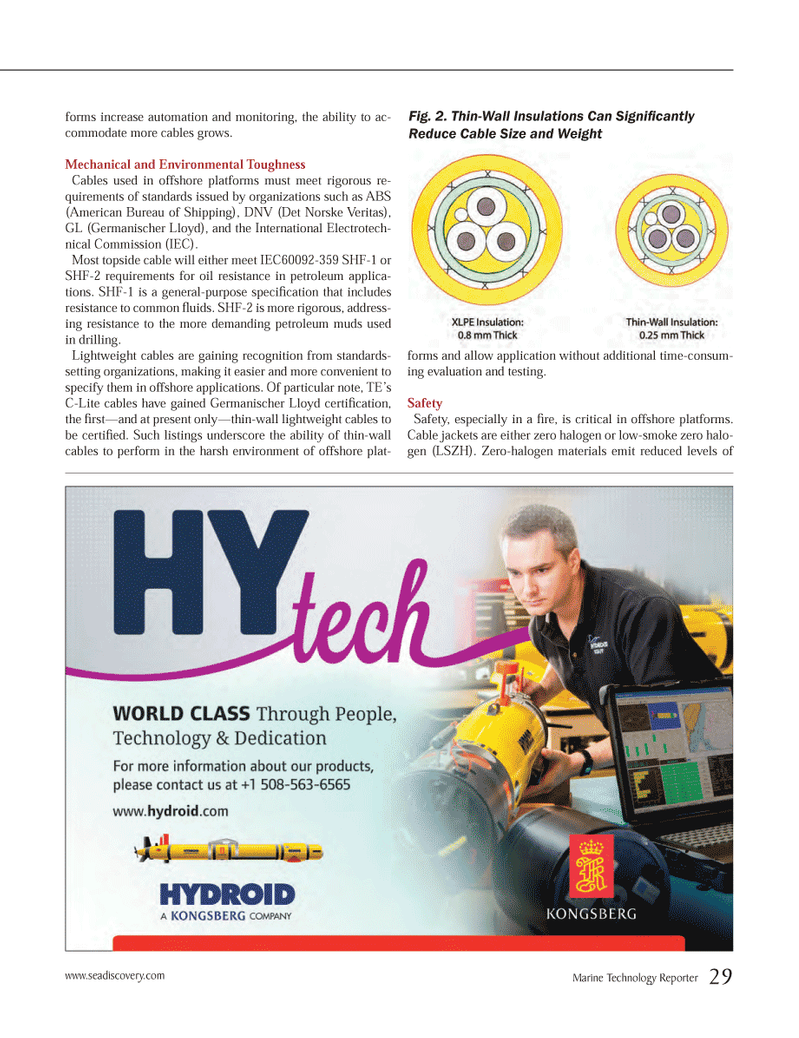
Page 29: of Marine Technology Magazine (October 2012)
Ocean Observation: Gliders, buoys & sub surface monitoring networks
Read this page in Pdf, Flash or Html5 edition of October 2012 Marine Technology Magazine
forms increase automation and monitoring, the ability to ac-commodate more cables grows. Mechanical and Environmental Toughness Cables used in offshore platforms must meet rigorous re- quirements of standards issued by organizations such as ABS (American Bureau of Shipping), DNV (Det Norske Veritas), GL (Germanischer Lloyd), and the International Electrotech- nical Commission (IEC). Most topside cable will either meet IEC60092-359 SHF-1 or SHF-2 requirements for oil resistance in petroleum applica-tions. SHF-1 is a general-purpose speciÞ cation that includes resistance to common ß uids. SHF-2 is more rigorous, address- ing resistance to the more demanding petroleum muds used in drilling. Lightweight cables are gaining recognition from standards-setting organizations, making it easier and more convenient to specify them in offshore applications. Of particular note, TEÕs C-Lite cables have gained Germanischer Lloyd certiÞ cation, the Þ rstÑand at present onlyÑthin-wall lightweight cables to be certiÞ ed. Such listings underscore the ability of thin-wall cables to perform in the harsh environment of offshore plat- forms and allow application without additional time-consum- ing evaluation and testing. SafetySafety, especially in a Þ re, is critical in offshore platforms. Cable jackets are either zero halogen or low-smoke zero halo- gen (LSZH). Zero-halogen materials emit reduced levels of Fig. 2. Thin-Wall Insulations Can Signi Þ cantly Reduce Cable Size and Weight Marine Technology Reporter 29www.seadiscovery.com MTR #8 (18-33).indd 29MTR #8 (18-33).indd 2910/3/2012 9:47:29 AM10/3/2012 9:47:29 AM

 28
28

 30
30
